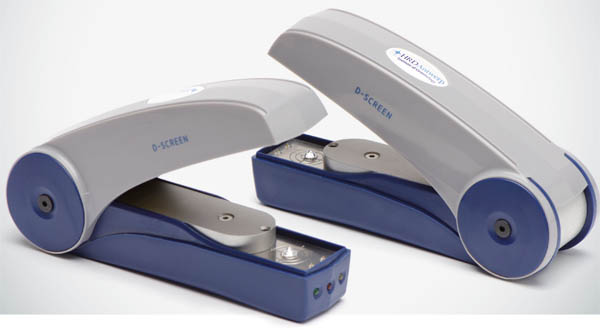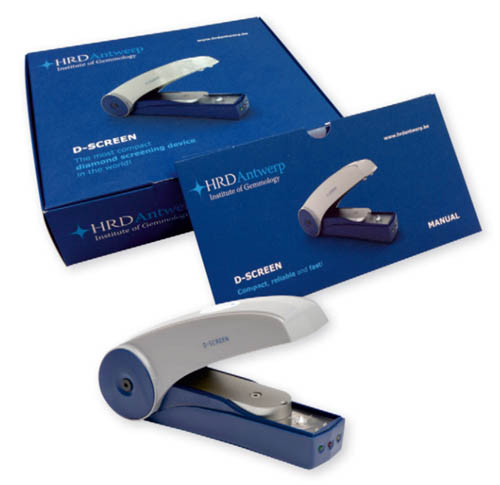
 The D- Screen is a practical research device developed by HRD Antwerp. It distinguishes stones that are not lab grown and have not been HPHT colour enhanced from stones that are potentially lab grown or may have been colour improved by means of HPHT. Up until the sixties, a colourless or nearly colourless diamond was by definition a natural one. In the eighties the first lab grown diamonds of gem quality appeared on the market, using HPHT synthesis. (High Pressure High Temperature).
The D- Screen is a practical research device developed by HRD Antwerp. It distinguishes stones that are not lab grown and have not been HPHT colour enhanced from stones that are potentially lab grown or may have been colour improved by means of HPHT. Up until the sixties, a colourless or nearly colourless diamond was by definition a natural one. In the eighties the first lab grown diamonds of gem quality appeared on the market, using HPHT synthesis. (High Pressure High Temperature).
Commercial HPHT treatment gained a great deal of attention, as the technique could turn some brown diamonds into colourless diamonds. It was after all, the very first technique that could “remove” colour. In the beginning of the 21st Century, CVD techniques were introduced to produce lab grown diamonds (Chemical Vapour Deposition).
It also became possible to remove the brownish colour of some CVD lab grown diamonds in order obtain colourless diamonds by using HPHT treatment. The arrival of these new techniques brought about enormous challenges for scientist and researchers. They embarked upon an intensive search for new techniques to identify the true nature of a diamond: natural, treated or lab grown. These techniques were also to be user-friendly, reliable and economical. Years of research by HRD Antwerp resulted in the launch of a unique device: the D-Screen. COMPACT, RELIABLE AND FAST.

How to Use Your D-screen
Make sure your stone is a polished diamond (one facet will do), colour D to J, weighing between 0.20 and 10 ct. Place your diamond table down on the detector. Close the device. After a few seconds, the result appears on the indicators :
Green: the diamond is not synthetic and not HPHT colour enhanced.
Orange: the diamond may be lab grown or HPHT colour enhanced, the diamond requires further examination in the HRD Antwerp Diamond Lab.
Red: low battery voltage or defective device.
What You Need to Know About Your D-screen
A D-Screen is not developed to distinguish simulants such
as cubic zirconia (CZ) and moissanite. Non-destructive
testing methods are used to distinguish diamond and its
simulants based on different material properties. Amongst
the testing methods used are optical inspection, gem
testers, hardness pencils and/or density measurements.
Advantages
- Easy check if your diamonds are not lab-grown or
HPHT colour enhanced
- Fast and 100 % reliable results
- Compact and user-friendly
- Ergonomic
- Mobile use (battery) and easy to carry
- Fit for all diamond cuts (round and fancies)
- • Screening of 200 stones/hour
Characteristics
- Compact size 40 x 50 x 150 mm (size of a stapler)
- Battery or AC
- 325 g (battery inclusive).
- Power supply: 9V DC 250 mA
- Adaptor input: 110 – 230 V, 50/60 HZ
- Adaptor output: 9V DC 300 mA



